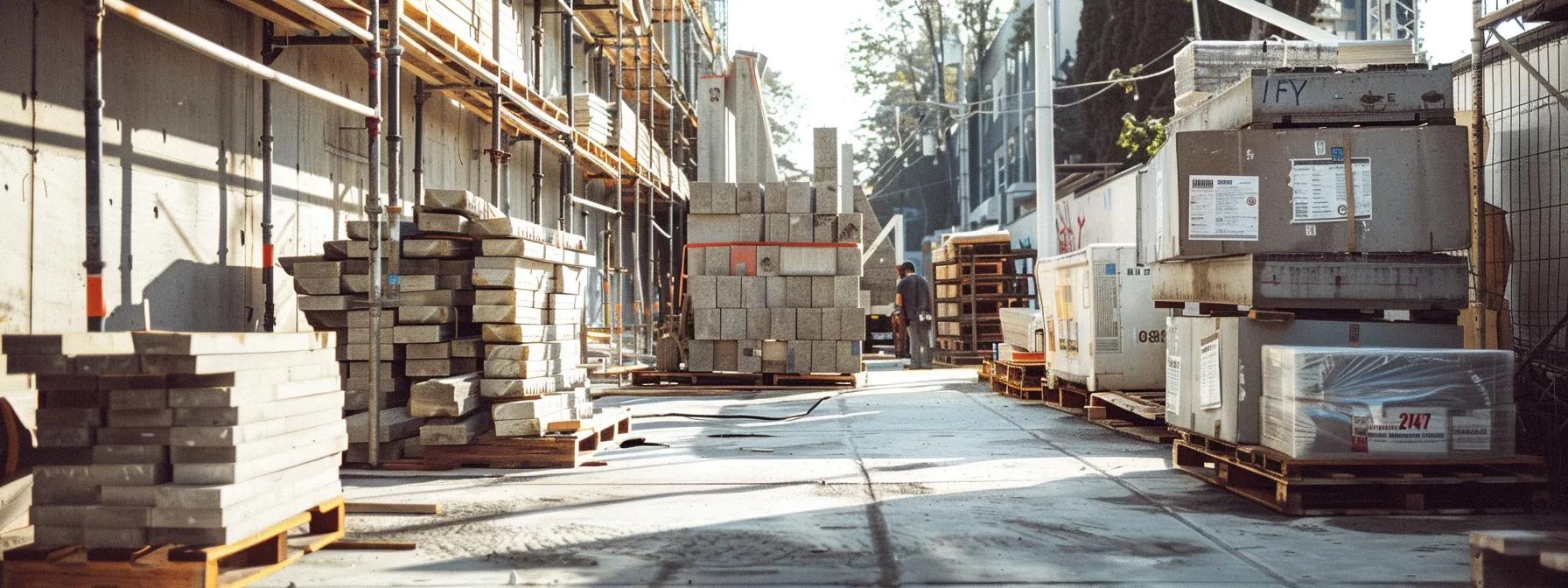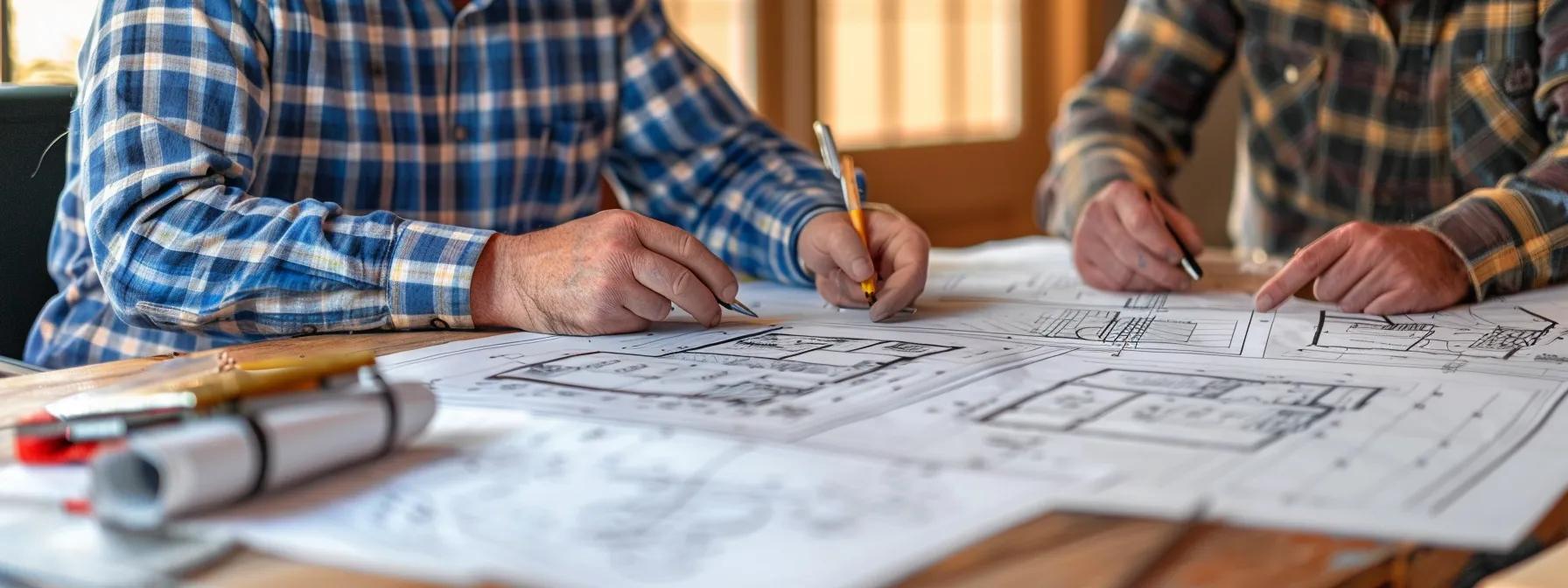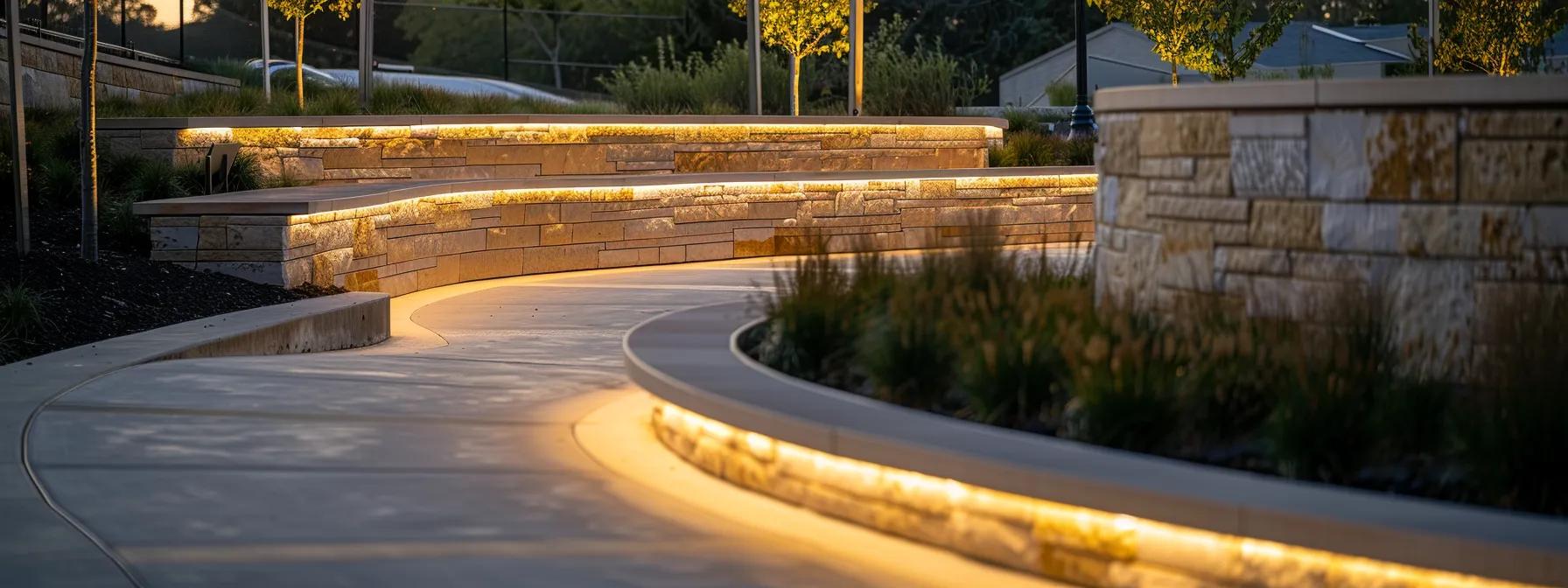Welcome to our Blog
The Brainerd Boulders Blog

Understanding Retaining Wall Costs: Key Budgeting Insights
Understanding Retaining Wall Costs: Key Factors That Affect Your Budget and Installation Prices
Building a retaining wall is both an art and a science that requires careful planning, the right materials, and professional execution. Homeowners and business owners often wonder about the cost of retaining walls and the factors influencing those prices. This guide explains key cost drivers—from material choices and labor rates to site conditions and regional differences—helping you develop realistic project budgets and avoid unexpected expenses while achieving a durable solution for erosion control and landscaping needs. Concrete block
This guide addresses essential questions including the average costs, how installation varies by wall dimensions and site conditions, and which design choices can affect your overall project budget. Whether you are planning a small backyard improvement or a large commercial project, read on to learn how to plan a cost-effective retaining wall project.
What Is the Average Cost of Retaining Walls?
Homeowners can typically expect standard retaining wall installations to cost between $20 and $50 per square foot. This estimate covers basic materials and labor; however, costs may rise with additional services like site grading or waterproofing. Higher-end materials—such as natural stone or reinforced concrete block systems—tend to push prices upward, while standard gravel or concrete walls remain more affordable. Difficult soil conditions or steep slopes can also raise the cost through increased installation complexity. Regional market conditions in Central Minnesota and the northern Twin Cities area generally align with these estimates, though obtaining multiple quotes from local contractors is strongly recommended.
How Does Retaining Wall Cost Per Square Foot Vary?
Cost per square foot depends largely on material and design. A simple retaining wall with poured concrete may run between $25 and$35 per square foot, while reinforced modular walls using systems like Allan Block or Keystone Block may cost between $30 and$50 per square foot. Installation factors—including excavation, drainage systems, and waterproofing—also play a significant role. For instance, walls in high water table areas may need specialized French drains or tiebacks. In regions with colder climates, extra labor for frost protection and insulation further increases costs.
What Are Typical Retaining Wall Cost Estimates for Homeowners?
For residential projects, a basic 3-to 4-foot tall concrete retaining wall spanning 50 feet typically costs between$4,500 and$8,000. More elaborate designs featuring seating or custom shapes can drive the price significantly higher. Often, estimates break costs into materials (around$15 per square foot), labor (around$20 per square foot), and miscellaneous expenses like permits and drainage (approximately$5–$10 per square foot). Planning for a contingency of 10% to 20% is advisable to cover unforeseen flood issues during construction.
Which Factors Most Affect Retaining Wall Prices?

The price of retaining walls is influenced by several core factors:
Material selection
Wall dimensions
Soil characteristics
Understanding each factor helps in planning the project effectively and prevents budget overruns.
How Do Material Choices Influence Retaining Wall Costs?
Material selection is crucial. Poured concrete is economical and durable with a modern look, whereas natural stone or brick walls provide a decorative finish but come with higher material and labor costs. Modular block systems, such as those using Allan or Keystone blocks, offer a good balance of cost and design flexibility though they usually require professional installation. Essential components like rebar and mortar help ensure structural integrity, particularly in high soil pressure areas. When evaluating materials, consider not only the upfront price but also long-term durability and maintenance.
What Role Does Wall Height and Length Play in Pricing?
Wall dimensions directly impact both material volume and labor costs. Taller walls need robust structural support and may require additional engineering, permits, or tiebacks. Each extra foot in height increases the surface area exposed to soil pressure and may force the use of thicker, reinforced construction. Similarly, longer walls mean more materials and extended installation time. A professional evaluation is important to balance desired dimensions against retaining wall efficiency.
How Do Site Conditions and Soil Type Affect Installation Costs?
Site conditions, including soil type and terrain, can significantly alter retaining wall costs. Unstable soils, high moisture levels, or steep slopes require extra excavation, soil stabilization, and enhanced drainage systems. For instance, clay soils that expand in freeze-thaw cycles demand a stronger wall design with added waterproofing measures compared to well-draining sandy soils. Contractors may perform soil tests to determine the appropriate foundation and reinforcement methods, which can add to installation expenses.
How Much Does Retaining Wall Installation Cost?
Installation costs cover labor, materials, engineering fees, and permits. On average, labor for retaining wall installation ranges from $30 to $60 per square foot, influenced by wall complexity and local market conditions. Additional costs may include earth removal and the installation of drainage or waterproofing systems. It is best to obtain detailed quotes from reputable contractors to ensure a precise budget.
What Are Typical Labor Costs for Retaining Wall Installation?
Labor costs vary with project complexity and local conditions. In Central Minnesota, expect rates to range from$30 to$60 per square foot. Tasks might include excavation, rebar placement, and concrete block pouring. Projects requiring extra site preparation or grading may drive up labor expenses. It is important to note that higher rates often reflect experienced contractors whose work can result in fewer post-installation issues and enhanced retaining wall .
How Do Permitting and Engineering Fees Impact Total Costs?
Permitting and engineering fees can add an additional 10% to 20% to overall costs. These fees cover compliance with local zoning and safety regulations and ensure that walls exceeding 4 feet in height or those built on challenging terrains are designed by qualified engineers. Confirming these details upfront with your contractor helps prevent surprises later in the budget.
When Is Professional Installation Necessary vs. DIY?
Professional installation is generally necessary for walls over 3 feet or those built on unstable terrain, where structural integrity is critical. While DIY might work for small, decorative walls, the risks—inexperienced installation leading to failure or water damage—typically outweigh any savings. A professional setup ensures code compliance, provides warranties, and protects your investment, especially for a retaining wall .
How Can You Get Accurate Retaining Wall Cost Estimates?

Accurate estimates begin with detailed project planning and open communication with contractors. A thorough site assessment that considers wall dimensions, retaining wall type, and drainage needs is essential. Reputable companies often offer free consultations that reveal hidden costs and help fine-tune design solutions. Request itemized written estimates covering materials, labor, permits, and additional site preparations to avoid unexpected budget surprises.
What Information Do Contractors Need for Precise Quotes?
Contractors require exact measurements for height, length, and thickness, a clear site description, and photographs emphasizing drainage conditions and soil type. Informing them of your material preferences—whether cost-effective poured concrete or premium natural stone—and any extra design features like integrated seating or retaining wall enables them to provide accurate and comprehensive quotes. Clear documentation helps identify potential challenges early in the process.
How Do Site Assessments Influence Cost Projections?
A professional site assessment evaluates terrain, soil stability, and obstacles such as underground utilities. These evaluations predict the amount of preparatory work required and influence design suggestions, such as stepped walls or extra reinforcement measures. Accurate site assessments ensure that retaining wall projections are realistic and help prevent costly overruns during construction.
What Are Common Hidden Costs to Watch For?
Even detailed estimates may overlook hidden costs such as additional drainage, extra soil stabilization, permit fees, or unexpected site remediation. Issues discovered during excavation—like drainage failures or damaged foundations—can further increase the retaining wall cost. Planning a contingency fund of 10% to 20% of your total budget is wise.
What Are Cost-Saving Tips for Retaining Wall Projects?
Cost-saving strategies include careful material selection, streamlined wall design, and strategic project management. For example, using standard pre-cast concrete block instead of custom stone can reduce costs without sacrificing durability. Undertaking basic site preparation tasks yourself and scheduling work during off-peak seasons can further lower expenses.
How Can Material Selection Reduce Expenses Without Sacrificing Quality?
Choosing affordable yet durable materials is key. Modular concrete blocks not only lower both material and labor costs but also simplify installation. Sustainable, locally sourced recycled materials can also reduce shipping costs and environmental impact. Discuss alternatives with your contractor to strike a balance between cost efficiency and long-term performance.
When Does Project Scope Affect Overall Budget?
Increasing wall height, length, or adding decorative features like seating or lighting will naturally raise material and labor costs. Clearly defining the essential aspects of your project early on—versus optional enhancements—can help manage costs. A well-defined scope allows contractors to provide more accurate and realistic quotes while reducing the chance of unexpected expenses.
How Does Maintenance Impact Long-Term Retaining Wall Costs?
Investing in quality materials and proper engineering can lower long-term maintenance costs. Regular upkeep—such as cleaning drainage systems, resealing joints, and periodic inspections—prevents issues like flood and structural deterioration. Scheduling annual maintenance and establishing a relationship with local service providers further protects your retaining wall.
Why Does Retaining Wall Design Affect Your Budget?

Retaining wall design not only affects visual appeal but also plays a major role in construction complexity and costs. Standard, straightforward designs require fewer customizations and less labor, while custom designs with curves, integrated seating, or decorative stone veneers demand extra engineering, specialized materials, and increased labor time. Balancing aesthetic goals with budget considerations is essential.
How Do Custom Designs Influence Cost Compared to Standard Walls?
Custom designs involve personalized measurements, unique material selections, and additional on-site customization work that drives up both labor and material costs. Although they offer a distinctive appearance that can enhance property value, custom walls usually come at a significant premium. Homeowners must weigh the benefits of personalized design against the likelihood of higher expenses and longer project timelines. Retaining wall s are often included in such designs.
What Are Sustainable Material Options and Their Cost Implications?
Sustainable options such as recycled concrete, locally sourced natural stone, or rammed earth may have a higher upfront cost but can offer long-term savings through enhanced durability and lower maintenance needs. These materials often lower transportation costs and benefit from environmental incentives, helping balance initial investments with overall retaining wall efficiency.
How Does Structural Engineering Ensure Cost-Effective Durability?
Structural engineering ensures that your retaining wall is built to last without excessive material use. By precisely calculating soil pressure, load distribution, and drainage needs, engineers can design a wall with minimal waste while still meeting safety standards. This precision not only reduces initial costs but also minimizes the risk of future repairs, offering long-term durability and retention wall cost -effectiveness.
How Do Retaining Wall Costs Vary by Region and Contractor?
Retaining wall costs vary significantly due to regional factors such as local labor rates, material availability, climate conditions, and regulatory requirements. In areas like Central Minnesota and the northern Twin Cities, additional factors like frost protection and drainage for freeze-thaw cycles can affect overall pricing. Contractors with established reputations, like Pine Ridge Lawn & Landscape, may charge premium rates that reflect their expertise and reliability, so comparing multiple quotes is important.
What Regional Factors Cause Price Differences?
Regional price variations stem from local labor market conditions, permit fees, material accessibility, and climate challenges. In harsh winter zones, for example, specialized drainage and insulation measures can add to the cost. Urban areas with strict building codes often incur higher permit fees, while regions with abundant local materials typically see lower retaining wall costs.
How Can You Compare Contractor Quotes Effectively?
Obtain itemized bids from contractors that clearly list material, labor, permit, and engineering costs. Creating a side-by-side comparison table that includes total cost, project timeline, warranty details, and contractor experience is highly beneficial. Additionally, seek references and review past work to assess reliability and workmanship quality. This thorough evaluation helps you secure competitive pricing without sacrificing quality.
What Are the Benefits of Choosing a Full-Service Retaining Wall Company?
Full-service companies cover every stage—from initial design and permitting to material procurement and installation—ensuring a streamlined process with a single point of accountability. This integrated service reduces coordination issues, minimizes scheduling conflicts, and often includes post-installation maintenance and better warranties. The convenience and reliability of a full-service provider justify their sometimes higher upfront costs.
Frequently Asked Questions
Q: What is the average cost per square foot for a retaining wall in Central Minnesota? A: It generally ranges from $20 to $50 per square foot, depending on the materials used, wall dimensions, site conditions, and labor rates. Additional requirements like drainage and waterproofing may affect the final price.
Q: How does soil type affect retaining wall installation costs? A: Stable, sandy soils are easier and less costly to work with compared to clay or rocky soils, which often require more excavation, drainage solutions, and reinforcement. A detailed site assessment helps determine the best design and preparation methods.
Q: When should homeowners opt for professional installation versus DIY? A: For walls taller than 3 feet or those built on uneven or unstable terrain, professional installation is recommended to ensure safety and code compliance. DIY might be feasible for small, decorative retaining wall s but carries risks of future repair expenses.
Q: Can sustainable materials reduce costs? A: Sustainable materials such as recycled concrete or locally sourced stone may have higher initial costs but can lower long-term expenses due to superior durability and reduced maintenance needs. They may also qualify for green building incentives including concrete block.
Q: What hidden costs should be expected? A: Hidden expenses can include additional drainage systems, extra site preparation, permit fees, engineering consultations, and post-installation landscaping restoration. A contingency fund of 10% to 20% is advisable.
Q: How do custom designs affect the budget? A: Custom designs usually result in higher costs due to personalized engineering, intricate workmanship, and longer installation times compared to standard, modular solutions.
Q: What steps help ensure accurate contractor estimates? A: Provide detailed project dimensions, site photographs, and soil conditions. Request itemized quotes and compare multiple bids while considering a professional site assessment to avoid surprises, especially with regard to the foundation.
Final Thoughts
Retaining wall projects require clear planning and a solid understanding of factors such as material selection, wall dimensions, site conditions, and regional retention wall cost differences. Paying attention to these details and working with experienced, full-service providers can help ensure your project remains both cost-effective and durable. Informed decision-making and comprehensive planning will lead to a retaining wall that enhances both your property's value and its landscape aesthetics.

Working Hours
Mon: 7am - 5pm
Tues: 7am - 5pm
Wed: 7am - 5pm
Thur: 7am - 5pm
Fri: 7am - 5pm
Sat: Closed
Sun: Closed


